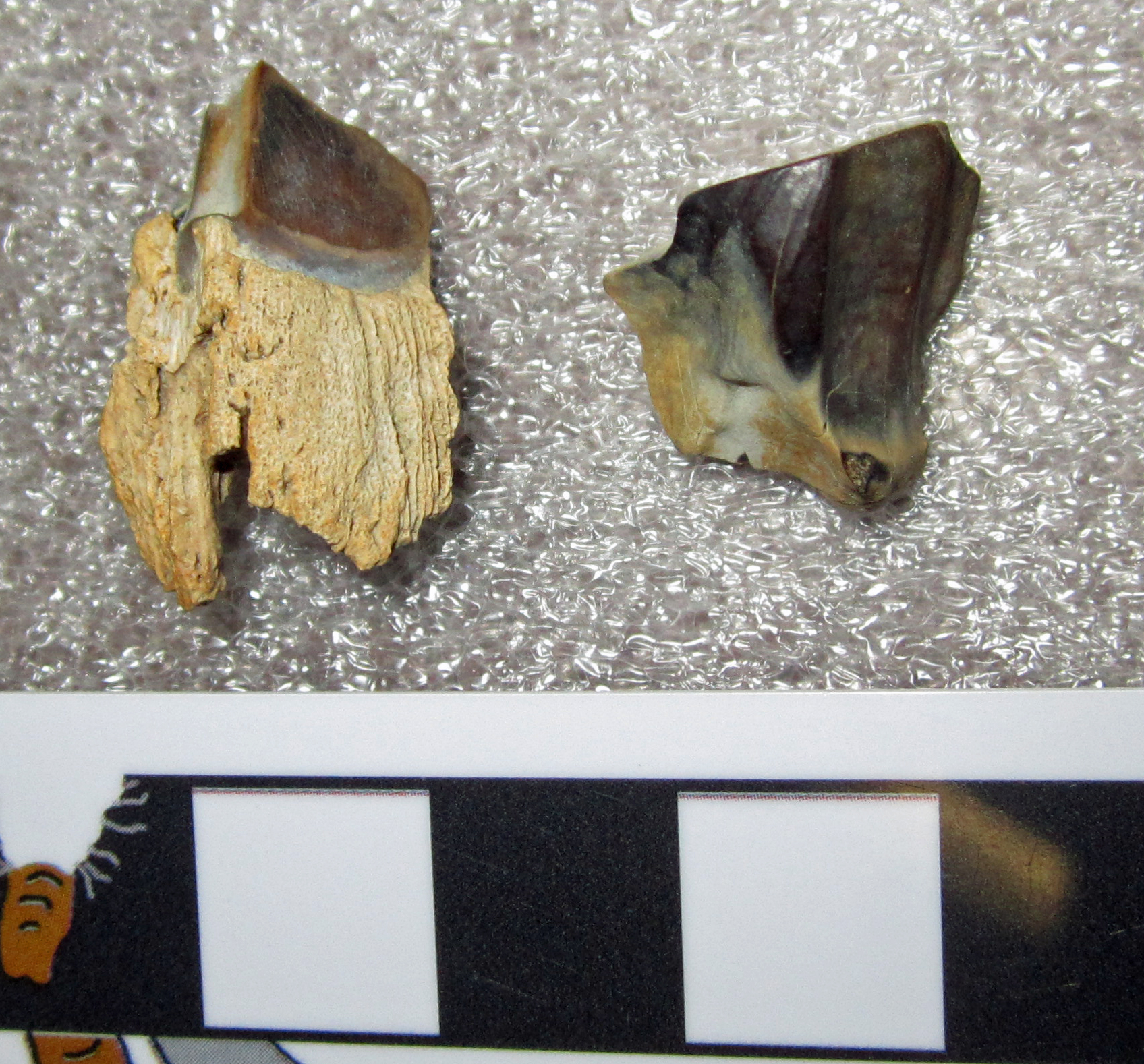 Dinosaurs evolved many amazing and sophisticated adaptations during their long history. One of the most remarkable is the ability of some plant-eating dinosaurs to chew their food. This feature evolved independently in the armored ankylosaurs, the thumb-spiked and duck-billed iguanodonts, and the horned ceratopsians. In a recent open-access study, Erickson et al. (2015) examined the teeth of the famous ceratopsian Triceratops for clues as to how they functioned in feeding. This paper is available here: http://advances.sciencemag.org/content/1/5/e1500055.fullErickson et al. found that the teeth of Triceratops wore down to form a sharp cutting edge over time and with use, allowing the animal to chew resilient plants. As the teeth wore down, they also developed shallow depressions on the cutting surface as a means to lessen friction during the chewing motion. As a tooth was worn down completely, a new tooth growing from below would be ready to replace it.Today's Fossil Friday image shows two Triceratops teeth that were found in the Hell Creek Formation of Montana by local fossil hunter Harley Garbani and donated to the Western Science Center by his wife, Mary. Triceratops lived at the very end of the age of dinosaurs, and went extinct as part of the mass extinction 66 million years ago. These teeth show the sharp slicing edge along the top. Other Triceratops specimens discovered by Harley Garbani are on display in the Western Science Center's temporary exhibit Great Wonders: The Horned Dinosaurs.Post by Curator Dr. Andrew T. McDonald.
Dinosaurs evolved many amazing and sophisticated adaptations during their long history. One of the most remarkable is the ability of some plant-eating dinosaurs to chew their food. This feature evolved independently in the armored ankylosaurs, the thumb-spiked and duck-billed iguanodonts, and the horned ceratopsians. In a recent open-access study, Erickson et al. (2015) examined the teeth of the famous ceratopsian Triceratops for clues as to how they functioned in feeding. This paper is available here: http://advances.sciencemag.org/content/1/5/e1500055.fullErickson et al. found that the teeth of Triceratops wore down to form a sharp cutting edge over time and with use, allowing the animal to chew resilient plants. As the teeth wore down, they also developed shallow depressions on the cutting surface as a means to lessen friction during the chewing motion. As a tooth was worn down completely, a new tooth growing from below would be ready to replace it.Today's Fossil Friday image shows two Triceratops teeth that were found in the Hell Creek Formation of Montana by local fossil hunter Harley Garbani and donated to the Western Science Center by his wife, Mary. Triceratops lived at the very end of the age of dinosaurs, and went extinct as part of the mass extinction 66 million years ago. These teeth show the sharp slicing edge along the top. Other Triceratops specimens discovered by Harley Garbani are on display in the Western Science Center's temporary exhibit Great Wonders: The Horned Dinosaurs.Post by Curator Dr. Andrew T. McDonald.
